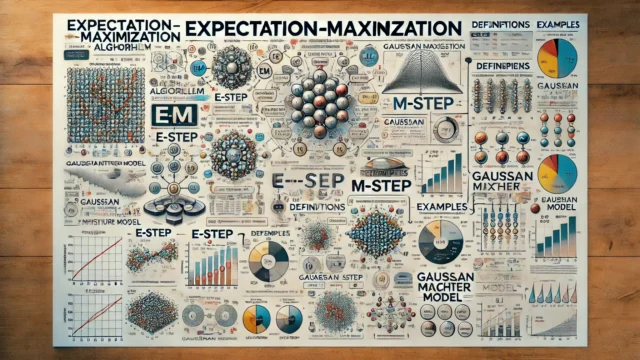Fourier Transform: Detailed Explanation, Proofs, and Derivations
The Fourier transform is a mathematical transform that decomposes functions depending on space or time into functions depending on spatial or temporal frequency. It is named after Joseph Fourier, who introduced the transform in his study of heat transfer.
Definition of the Fourier Transform
The Fourier transform of a function \( f(t) \) is given by:
$$ \hat{f}(\omega) = \int_{-\infty}^{\infty} f(t) e^{-i\omega t} \, dt $$
where \( \hat{f}(\omega) \) is the frequency domain representation of \( f(t) \), and \( \omega \) is the angular frequency.
The inverse Fourier transform is given by:
$$ f(t) = \frac{1}{2\pi} \int_{-\infty}^{\infty} \hat{f}(\omega) e^{i\omega t} \, d\omega $$
Properties of the Fourier Transform
1. Linearity: If \( a \) and \( b \) are constants, then
$$ \mathcal{F}\{af(t) + bg(t)\} = a\mathcal{F}\{f(t)\} + b\mathcal{F}\{g(t)\} $$
2. Translation: If \( t_0 \) is a constant, then
$$ \mathcal{F}\{f(t – t_0)\} = e^{-i\omega t_0} \hat{f}(\omega) $$
3. Scaling: If \( a \neq 0 \) is a constant, then
$$ \mathcal{F}\{f(at)\} = \frac{1}{|a|} \hat{f}\left(\frac{\omega}{a}\right) $$
4. Modulation: If \( \omega_0 \) is a constant, then
$$ \mathcal{F}\{f(t) e^{i\omega_0 t}\} = \hat{f}(\omega – \omega_0) $$
5. Convolution: If \( f(t) \) and \( g(t) \) are functions, then
$$ \mathcal{F}\{(f * g)(t)\} = \hat{f}(\omega) \hat{g}(\omega) $$
where \( (f * g)(t) = \int_{-\infty}^{\infty} f(\tau) g(t – \tau) \, d\tau \) is the convolution of \( f \) and \( g \).
6. Parseval’s Theorem: For functions \( f(t) \) and \( g(t) \),
$$ \int_{-\infty}^{\infty} f(t) \overline{g(t)} \, dt = \frac{1}{2\pi} \int_{-\infty}^{\infty} \hat{f}(\omega) \overline{\hat{g}(\omega)} \, d\omega $$
Derivations and Proofs
Derivation of the Inverse Fourier Transform
Starting from the definition of the Fourier transform:
$$ \hat{f}(\omega) = \int_{-\infty}^{\infty} f(t) e^{-i\omega t} \, dt $$
Multiply both sides by \( e^{i\omega t} \) and integrate with respect to \( \omega \):
$$ \int_{-\infty}^{\infty} \hat{f}(\omega) e^{i\omega t} \, d\omega = \int_{-\infty}^{\infty} \left( \int_{-\infty}^{\infty} f(\tau) e^{-i\omega \tau} \, d\tau \right) e^{i\omega t} \, d\omega $$
Interchanging the order of integration:
$$ \int_{-\infty}^{\infty} f(\tau) \left( \int_{-\infty}^{\infty} e^{i\omega (t – \tau)} \, d\omega \right) \, d\tau $$
The inner integral is the Dirac delta function:
$$ \int_{-\infty}^{\infty} e^{i\omega (t – \tau)} \, d\omega = 2\pi \delta(t – \tau) $$
Thus,
$$ \int_{-\infty}^{\infty} \hat{f}(\omega) e^{i\omega t} \, d\omega = 2\pi f(t) $$
Therefore, the inverse Fourier transform is:
$$ f(t) = \frac{1}{2\pi} \int_{-\infty}^{\infty} \hat{f}(\omega) e^{i\omega t} \, d\omega $$
Proof of Parseval’s Theorem
Starting with the definition of the Fourier transform,
$$ \hat{f}(\omega) = \int_{-\infty}^{\infty} f(t) e^{-i\omega t} \, dt $$
and
$$ \hat{g}(\omega) = \int_{-\infty}^{\infty} g(t) e^{-i\omega t} \, dt $$
Consider the integral:
$$ \int_{-\infty}^{\infty} f(t) \overline{g(t)} \, dt $$
Using the inverse Fourier transform:
$$ f(t) = \frac{1}{2\pi} \int_{-\infty}^{\infty} \hat{f}(\omega) e^{i\omega t} \, d\omega $$
Substituting into the integral:
$$ \int_{-\infty}^{\infty} \left( \frac{1}{2\pi} \int_{-\infty}^{\infty} \hat{f}(\omega) e^{i\omega t} \, d\omega \right) \overline{g(t)} \, dt $$
Interchanging the order of integration:
$$ \frac{1}{2\pi} \int_{-\infty}^{\infty} \hat{f}(\omega) \left( \int_{-\infty}^{\infty} e^{i\omega t} \overline{g(t)} \, dt \right) d\omega $$
Recognizing the inner integral as the inverse Fourier transform of \( \overline{g(t)} \):
$$ \frac{1}{2\pi} \int_{-\infty}^{\infty} \hat{f}(\omega) \overline{\hat{g}(\omega)} \, d\omega $$
This completes the proof of Parseval’s theorem.





